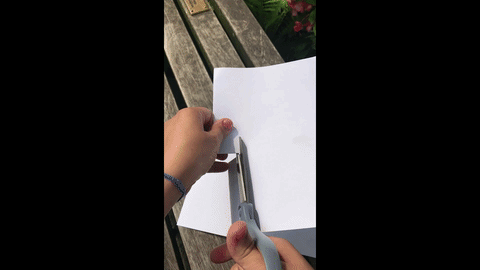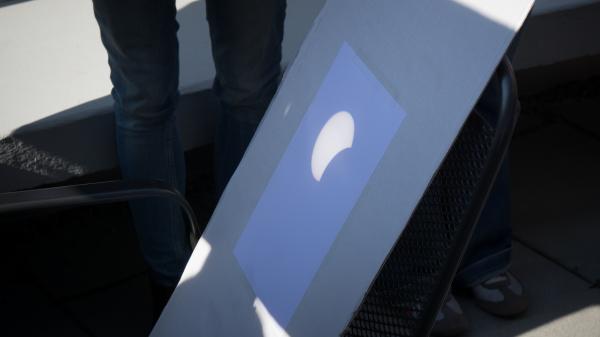
On the other end, tape a piece of white paper over the end of the tube. If you are using a long tube or taping 2 tubes together, cut the end of the tubes and tape the foil with a pinhole on 1 end. Adjust your position until you see a small projection, a reversed image, of the eclipsed Sun on the paper inside the box. Place the box over your head with the pinhole towards the Sun. Tape the sheet of paper on the inside of the other end of the box.Use the pin to poke a tiny hole in the center of the foil.Tape the foil over the rectangular hole in the box.Make sure the foil is completely flat and not crinkled. Using the scissors, cut out a piece of the aluminum foil slightly larger than the rectangular hole.The longer the box, the larger the projected image. You can tape 2 boxes together to make a long box. Cut a rectangular hole at the end of the box.And it only requires a few extra items to construct. However, the box makes this projector much sturdier and easier to set on a surface. This type of pinhole projector works on the same principle as a basic pinhole projector. Projecting the Sun in a box projector, or with binoculars or a telescope, or using only 2 pieces of cardboard is a safe and easy way to see a solar eclipse.
#HOW TO SEE THE ECLIPSE ON PAPER HOW TO#
How to make the best use of solar eclipse glasses

You can seriously hurt your eyes and even go blind. Never look directly at the Sun without proper eye protection. Watch an eclipse through a pinhole projector.

Poke a hole in paper or a card and hold it extended in your arms with your back to the sun, projecting it at either the ground or toward another card set up about a metre away. If you don't have eclipse glasses, you can make a pinhole projector. WATCH | How to safely watch a solar eclipse Check them for scratches or holes, and if you find any, throw them away. You risk damaging your eyes with even the slightest flaws. Instead, ensure you have adequate eye protection, such as solar eclipse glasses (new window), which you may have picked up during the 2017 eclipse. While solar eclipses are beautiful to see, it's important that you never look directly at the sun during these events - even if only part of it is covered, as it can cause severe eye damage. This map notes the times of maximum eclipse for Canadian cities. The reason we get these types of eclipses is due to an odd coincidence of nature: The sun is 400 times larger than the moon - but the moon is also 400 times closer to us. Every so often, the moon is able to completely cover the face of the sun. And once in a while, it just barely does so when it is at apogee, or the farthest from Earth in its monthly orbit. A partial eclipse is where the moon appears to swing through some of the sun.Īn annular eclipse, however, is when the moon is a little farther away from us in its orbit and covers all but the outer edge of the sun, creating what some call a ring of fire. During a total eclipse, the entire disk of the sun is covered by the moon.

There are three main types of solar eclipses: total, partial and annular. On Thursday, parts of the Northern Hemisphere - including Canada - will experience an annular solar eclipse, an event where most of the sun is blocked out by the moon. Just two weeks after the total lunar eclipse, there's another celestial event on the horizon - but this time involving the sun.


 0 kommentar(er)
0 kommentar(er)
